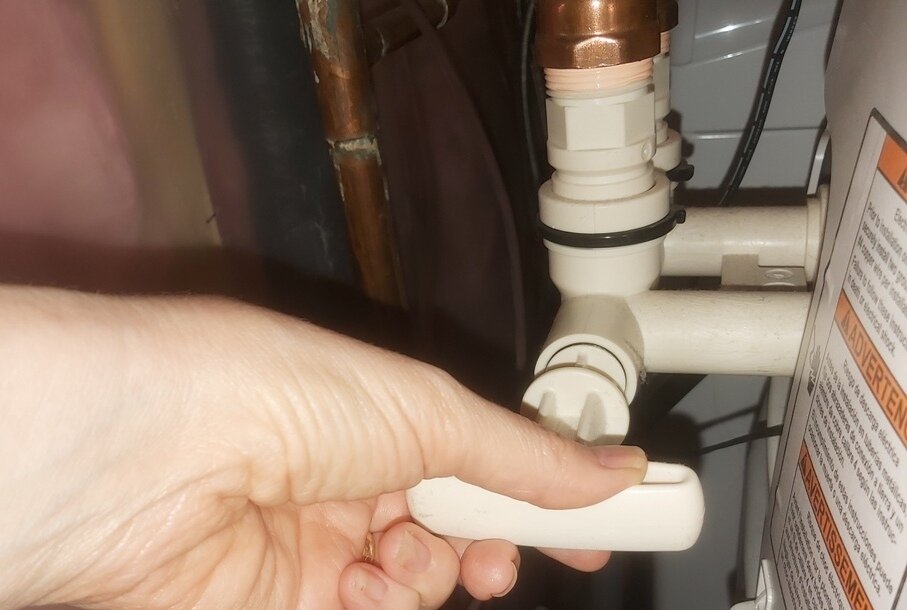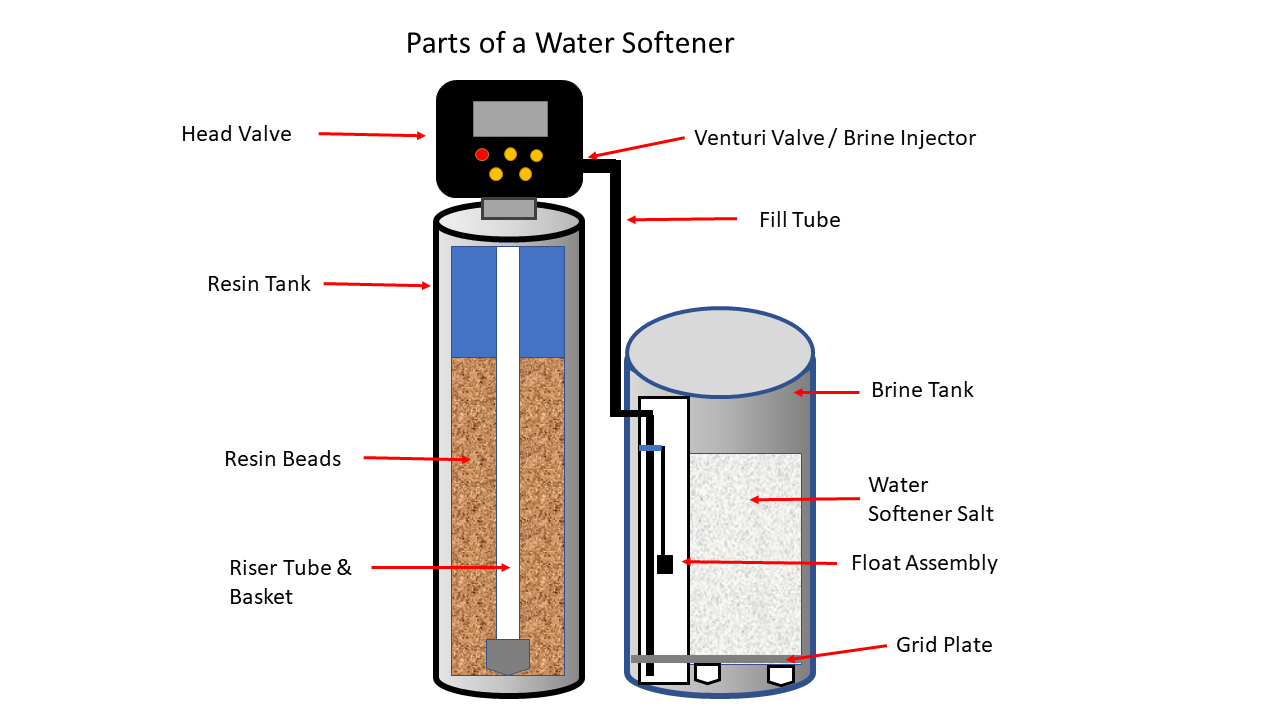A water softener bypass valve is a handle, button or lever that changes the flow of your water so it’s not sent into the softening process.
At WaterSmart, we have over 25 years of experience in the water softener and plumbing industry and we'd love to share our expertise with you.
What is a water softener bypass valve?
Let’s say you want to temporarily put your water softener to rest, whether it be to conserve salt or to use your water supply for a task that doesn’t require soft water.
For example, maybe you need to:
Water the lawn
Wash your car
Fill up a pool or pond
Most water softeners have a bypass valve, button or lever that allows you to use water that doesn’t need to be softened.
A typical household softener will have a valve that you either push in or turn to put your water softener into bypass mode.
Your water softener likely has a valve that looks like this.
How can I put my water softener in bypass?
The process should be quite easy once you find the water softener bypass valve.
Yours will be identified by looking behind the control head of your system (the box with the clock on top of the resin tank).
Let’s walk through the steps together:
Step 1 - Locate the valve.
Step 2 - Turn the valve in the direction of the arrows (usually clockwise) until it stops turning. It may be stiff and require some pressure, especially if you haven't put your water softener in bypass before or if it’s been a long time since you last did it.
Tip: Try turning the water on full blast in your tub or shower to release some of the water pressure going to your softener. This should make it easier to turn or push.
Step 3 - Once you are finished using your hard water, simply turn the knob or handle all the way back counter-clockwise.
What are the main parts of a water softener?
Below you can see the main parts of a water softener.
The bypass valve will be located behind the head valve. That’s where the clock, timer and control settings can be found.
When the bypass valve is activated, your water won’t go through the process of being softened which takes place in the resin and brine tanks.
How does a water softener work?
The purpose of a water softener is to reduce water hardness. Hard water contains large amounts of calcium and magnesium - two minerals that cause soapy scum on glasses, lime residue on bathroom fixtures, and scale build-up in pipes and appliances.
Here’s how it works:
A water softener exchanges "ions" of calcium and magnesium with sodium and potassium.
The water in your house runs through a resin bed of small plastic beads or zeolite. The beads are covered with sodium or potassium ions.
As the water flows past the ions, they swap places with the calcium and magnesium ions.
Eventually, the beads contain nothing but calcium and magnesium, and softening stops. It is then time to regenerate the beads or zeolite.
To regenerate, the beads need to regain their sodium or potassium ions by being flooded with a salty, brine solution that is rich in sodium or potassium.
At the end of the process, the calcium and magnesium - as well as other dirt particles - are flushed from the beads and into the drain in a process called backwash.
The final phase rinses the mineral tank with fresh water and loads the brine tank so it's ready for the next cycle.
105 Lexington Rd, Waterloo, ON
Need Help With Your Water Softener Bypass Valve, Kitchener-Waterloo?
If you need water softener repair or maintenance in the Kitchener-Waterloo region, you can trust WaterSmart.
We'd be happy to help at a reasonable rate.
Our expert, experienced plumbers will install your new water softener efficiently and at a price that you can afford.
If you purchase a water softener from us, your installation is free!
Contact WaterSmart today for a free quote.
“I own a few homes thus deal with many service companies. Bar none dealing with Greg was the most pleasant experience I can recall ever having. Friendly, honest, thorough and very fair pricing. I ended up having a new water softener installed and here are the exact words from my tenant regarding the install. They did a really good job, very professional and clean.”




